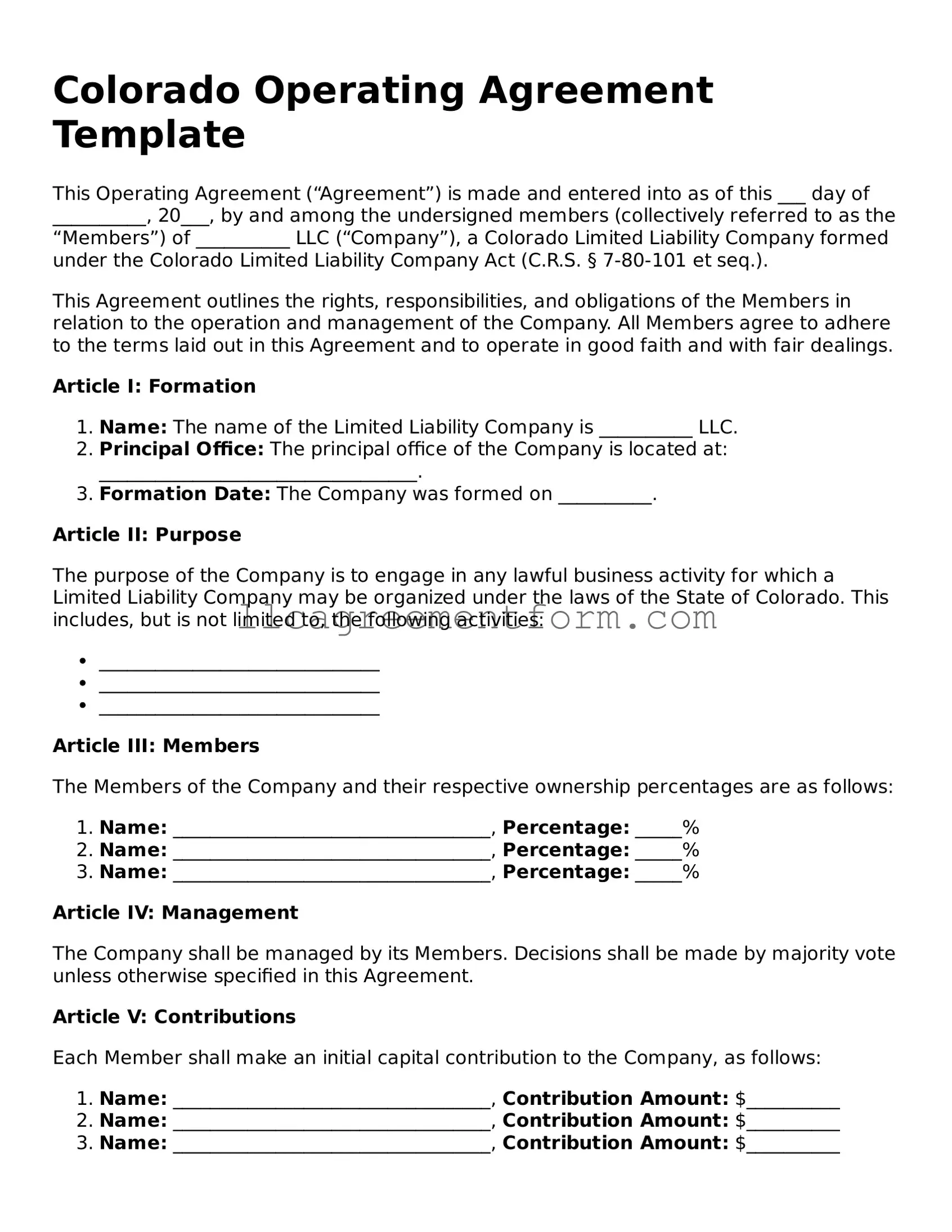Free Operating Agreement Document for Colorado
The Colorado Operating Agreement form is a crucial document that outlines the management structure and operational procedures of a limited liability company (LLC) in Colorado. This agreement serves to define the roles of members, their rights, and the responsibilities of the LLC. Understanding and completing this form is essential for ensuring compliance and protecting the interests of all parties involved.
To fill out the Colorado Operating Agreement form, please click the button below.
Get Operating Agreement Now
